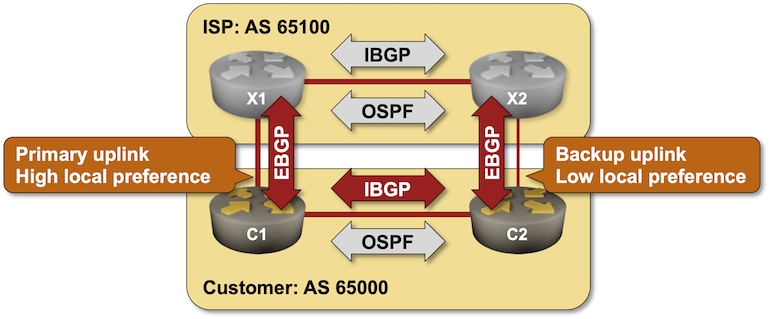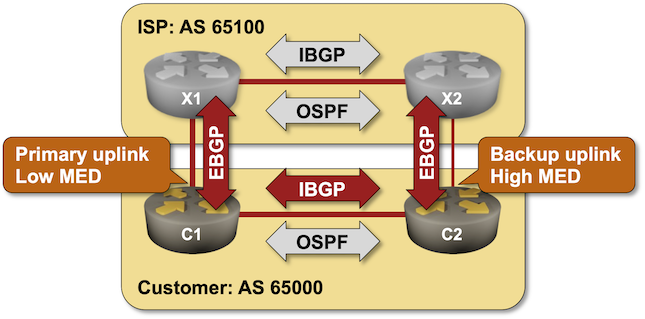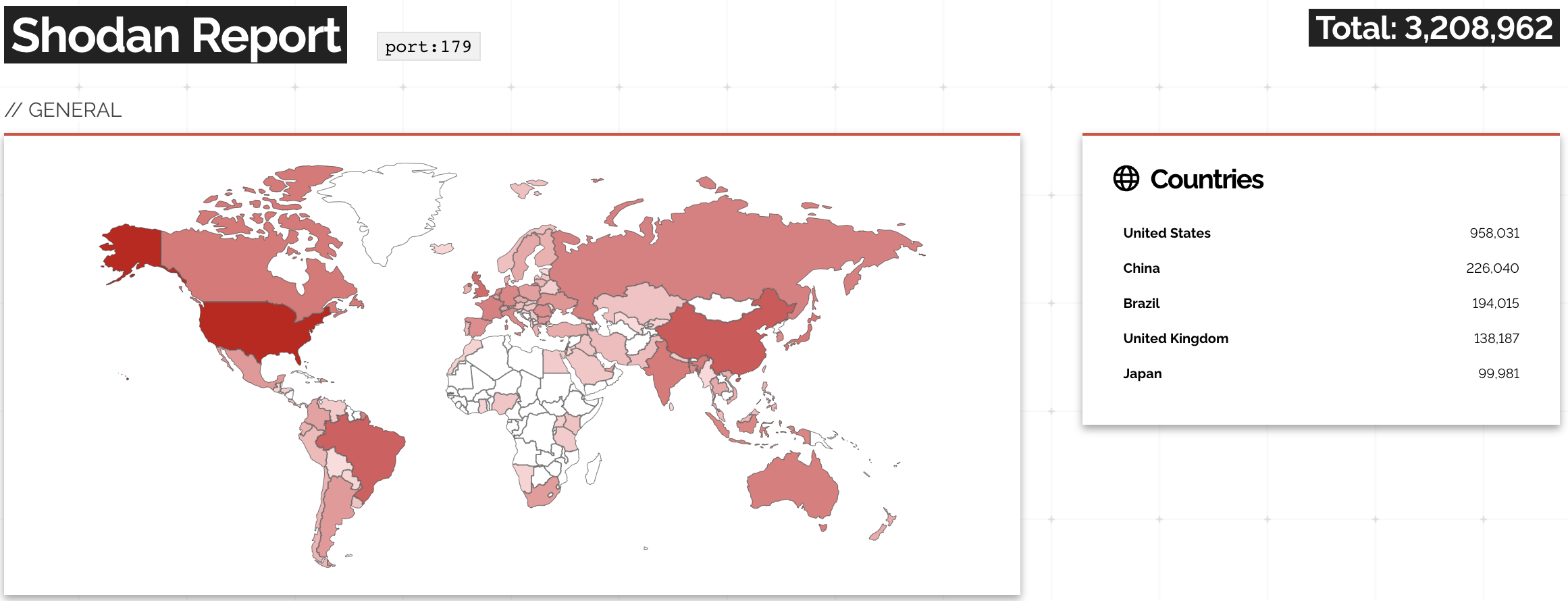VXLAN/EVPN Layer-3 Handoff (L3Out) on Arista EOS
A while ago, I published a blog post describing how to establish a LAN/WAN L3 boundary in VXLAN/EVPN networks using Cisco NX-OS. At that time, I promised similar information for Arista EOS. Here it is, coming straight from Massimo Magnani. The useful part of what follows is his; all errors were introduced during my editing process.
In the cases I have dealt with so far, implementing the LAN-WAN boundary has the main benefit of limiting the churn blast radius to the local domain, trying to impact the remote ones as little as possible. To achieve that, we decided to go for a hierarchical solution where you create two domains, local (default) and remote, and maintain them as separate as possible.
Video: Outages Caused by Bugs in BGP Implementations
The previous BGP-related videos described how fat fingers and malicious actors cause Internet outages.
Today, we’ll focus on the impact of bugs in BGP implementations, from malformed AS paths to mishandled transitive attributes. The examples in the video are a few years old, but you can see similar things in the wild in 2023.
Video: Outages Caused by Bugs in BGP Implementations
The previous BGP-related videos described how fat fingers and malicious actors cause Internet outages.
Today, we’ll focus on the impact of bugs in BGP implementations, from malformed AS paths to mishandled transitive attributes. The examples in the video are a few years old, but you can see similar things in the wild in 2023.
Worth Reading: Cloudflare Control Plane Outage
Cloudflare experienced a significant outage in early November 2023 and published a detailed post-mortem report. You should read the whole report; here are my CliffsNotes:
- Regardless of how much redundancy you have, sometimes all systems will fail at once. Having redundant systems decreases the probability of total failure but does not reduce it to zero.
- As your systems grow, they gather hidden- and circular dependencies.
- You won’t uncover those dependencies unless you run a full-blown disaster recovery test (not a fake one)
- If you don’t test your disaster recovery plan, it probably won’t work when needed.
Also (unrelated to Cloudflare outage):
Worth Reading: Cloudflare Control Plane Outage
Cloudflare experienced a significant outage in early November 2023 and published a detailed post-mortem report. You should read the whole report; here are my CliffsNotes:
- Regardless of how much redundancy you have, sometimes all systems will fail at once. Having redundant systems decreases the probability of total failure but does not reduce it to zero.
- As your systems grow, they gather hidden- and circular dependencies.
- You won’t uncover those dependencies unless you run a full-blown disaster recovery test (not a fake one)
- If you don’t test your disaster recovery plan, it probably won’t work when needed.
Also (unrelated to Cloudflare outage):
BGP Labs: Using Multi-Exit Discriminator (MED)
In the previous labs we used BGP weights and Local Preference to select the best link out of an autonomous system and thus change the outgoing traffic flow.
Most edge (end-customer) networks face a different problem – they want to influence the incoming traffic flow, and one of the tools they can use is BGP Multi-Exit Discriminator (MED).

BGP Labs: Using Multi-Exit Discriminator (MED)
In the previous labs, we used BGP weights and Local Preference to select the best link out of an autonomous system and thus change the outgoing traffic flow.
Most edge (end-customer) networks face a different problem – they want to influence the incoming traffic flow, and one of the tools they can use is BGP Multi-Exit Discriminator (MED).

Is Anyone Using netlab on Windows?
Tomas wants to start netlab with PowerShell, but it doesn’t work for him, and I don’t know anyone running netlab directly on Windows (I know people running it in a Ubuntu VM on Windows, but that’s a different story).
In theory, netlab (and Ansible) should work fine with Windows Subsystem for Linux. In practice, there’s often a gap between theory and practice – if you run netlab on Windows (probably using VirtualBox with Vagrant), I’d love to hear from you. Please leave a comment, email me, add a comment to Tomas’ GitHub issue, or fix the documentation and submit a PR. Thank you!
Is Anyone Using netlab on Windows?
Tomas wants to start netlab with PowerShell, but it doesn’t work for him, and I don’t know anyone running netlab directly on Windows (I know people running it in a Ubuntu VM on Windows, but that’s a different story).
In theory, netlab (and Ansible) should work fine with Windows Subsystem for Linux. In practice, there’s often a gap between theory and practice – if you run netlab on Windows (probably using VirtualBox with Vagrant), I’d love to hear from you. Please leave a comment, email me, add a comment to Tomas’ GitHub issue, or fix the documentation and submit a PR. Thank you!
LAN Data Link Layer Addressing
Last week, we discussed Fibre Channel addressing. This time, we’ll focus on data link layer technologies used in multi-access networks: Ethernet, Token Ring, FDDI, and other local area- or Wi-Fi technologies.
The first local area networks (LANs) ran on a physical multi-access medium. The first one (original Ethernet) started as a thick coaxial cable1 that you had to drill into to connect a transceiver to the cable core.
Later versions of Ethernet used thinner cables with connectors that you put together to build whole network segments out of pieces of cable. However, even in that case, we were dealing with a single multi-access physical network – disconnecting a cable would bring down the whole network.
LAN Data Link Layer Addressing
Last week, we discussed Fibre Channel addressing. This time, we’ll focus on data link layer technologies used in multi-access networks: Ethernet, Token Ring, FDDI, and other local area- or Wi-Fi technologies.
The first local area networks (LANs) ran on a physical multi-access medium. The first one (original Ethernet) started as a thick coaxial cable1 that you had to drill into to connect a transceiver to the cable core.
Later versions of Ethernet used thinner cables with connectors that you put together to build whole network segments out of pieces of cable. However, even in that case, we were dealing with a single multi-access physical network – disconnecting a cable would bring down the whole network.
Git Rebase: What Can Go Wrong?
Julia Evans wrote another must-read article (if you’re using Git): git rebase: what can go wrong?
I often use git rebase to clean up the commit history of a branch I want to merge into a main branch or to prepare a feature branch for a pull request. I don’t want to run it unattended – I’m always using the interactive option – but even then, I might get into tight spots where I can only hope the results will turn out to be what I expect them to be. Always have a backup – be it another branch or a copy of the branch you’re working on in a remote repository.
Git Rebase: What Can Go Wrong?
Julia Evans wrote another must-read article (if you’re using Git): git rebase: what can go wrong?
I often use git rebase to clean up the commit history of a branch I want to merge into a main branch or to prepare a feature branch for a pull request. I don’t want to run it unattended – I’m always using the interactive option – but even then, I might get into tight spots where I can only hope the results will turn out to be what I expect them to be. Always have a backup – be it another branch or a copy of the branch you’re working on in a remote repository.
Video: Kubernetes Calico Plugin
November is turning out to be the Month of BGP on my blog. Keeping in line with that theme, let’s watch Stuart Charlton explain the Calico plugin (which can use BGP to advertise the container networking prefixes to the outside world) in the Kubernetes Networking Deep Dive webinar.
Video: Kubernetes Calico Plugin
November is turning out to be the Month of BGP on my blog. Keeping in line with that theme, let’s watch Stuart Charlton explain the Calico plugin (which can use BGP to advertise the container networking prefixes to the outside world) in the Kubernetes Networking Deep Dive webinar.
Open BGP Daemons: There’s So Many of Them
A while ago, the Networking Notes blog published a link to my “Will Network Devices Reject BGP Sessions from Unknown Sources?” blog post with a hint: use Shodan to find how many BGP routers accept a TCP session from anyone on the Internet.
The results are appalling: you can open a TCP session on port 179 with over 3 million IP addresses.

A report on Shodan opening TCP session to port 179
Open BGP Daemons: There’s So Many of Them
A while ago, the Networking Notes blog published a link to my “Will Network Devices Reject BGP Sessions from Unknown Sources?” blog post with a hint: use Shodan to find how many BGP routers accept a TCP session from anyone on the Internet.
The results are appalling: you can open a TCP session on port 179 with over 3 million IP addresses.

A report on Shodan opening TCP session to port 179
Rapid Progress in BGP Route Origin Validation
In 2022, I was invited to speak about Internet routing security at the DEEP conference in Zadar, Croatia. One of the main messages of the presentation was how slow the progress had been even though we had had all the tools available for at least a decade (RFC 7454 was finally published in 2015, and we started writing it in early 2012).
At about that same time, a small group of network operators started cooperating on improving the security and resilience of global routing, eventually resulting in the MANRS initiative – a great place to get an overview of how many Internet Service Providers care about adopting Internet routing security mechanisms.